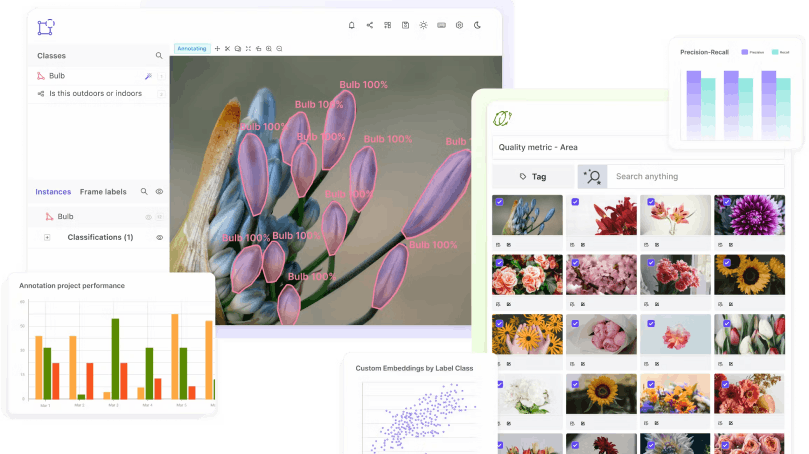Machine Learning
Encord Computer Vision Glossary
Machine learning (ML) is a field of artificial intelligence (AI) that focuses on developing algorithms that can learn from data without being explicitly programmed. Machine learning aims to enable computers to automatically identify patterns in data and use these patterns to make predictions or decisions.
In machine learning, a model is trained on a labeled dataset to recognize patterns and relationships between the input data and the output data. The model is then used to make predictions or decisions on new, unseen data. There are three main types of machine learning: supervised learning, unsupervised learning, and reinforcement learning.

The model is trained on labeled data in supervised learning, where the correct output is known. The model learns to map inputs to outputs based on this labeled data. In unsupervised learning, the model is trained on unlabeled data and aims to discover patterns and structures in the data. In reinforcement learning, the model learns by interacting with an environment and receiving rewards or punishments based on its actions.
Machine learning has numerous applications, including image and speech recognition, natural language processing, recommendation systems, and predictive analytics. It has the potential to automate and improve many tasks that are currently done by humans.
Evaluating Machine Learning Models
Evaluating machine learning models is crucial to assess their performance and determine their effectiveness. Several evaluation metrics are commonly used, such as accuracy, precision, recall, F1 score, and area under the ROC curve. These metrics provide quantitative measures of a model's predictive power, highlighting its ability to correctly classify or predict outcomes. Cross-validation techniques, such as k-fold cross-validation, help assess model performance on different subsets of data to mitigate bias. Additionally, visualizations like confusion matrices and precision-recall curves aid in understanding model behavior and identifying areas of improvement. Evaluating machine learning models enables researchers and practitioners to make informed decisions about model selection, optimization, and deployment in real-world scenarios.

Challenges of Machine Learning
Machine learning faces several challenges. One major challenge is the need for large and high-quality datasets to train models effectively. Acquiring and preparing such datasets can be time-consuming and resource-intensive. Another challenge is the interpretability and explainability of machine learning models, as they often operate as black boxes, making it difficult to understand the reasoning behind their predictions. Overfitting and underfitting are also common challenges, where models either fail to generalize well to new data or capture the underlying problem's complexity. Additionally, ethical considerations, such as bias in data and decision-making, privacy concerns, and the potential for job displacement, pose significant challenges to the adoption and deployment of machine learning systems.
Read More
Join the Encord Developers community to discuss the latest in computer vision, machine learning, and data-centric AI
Join the community